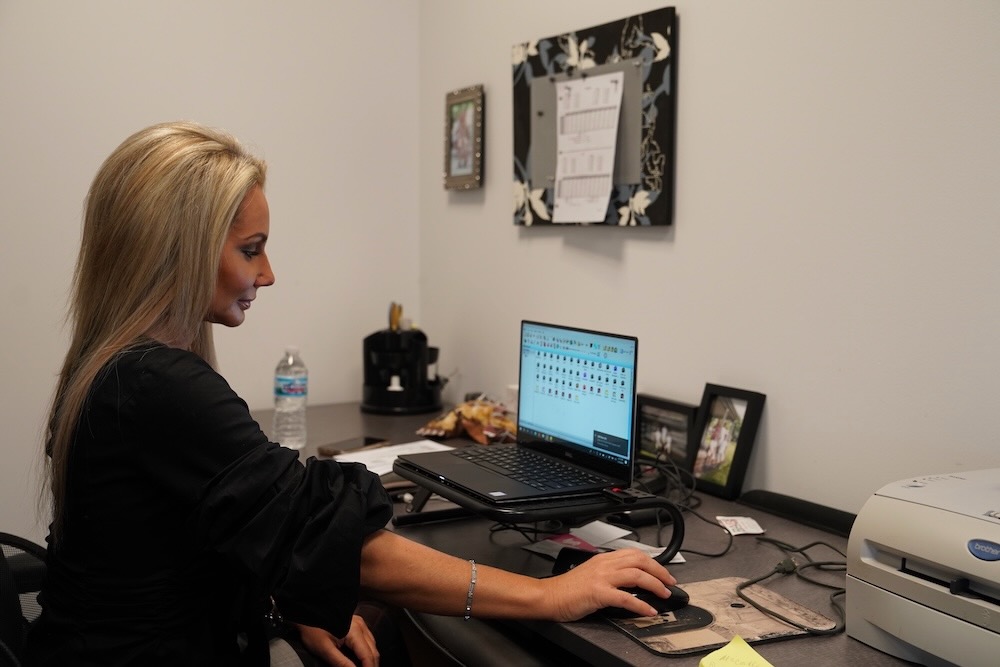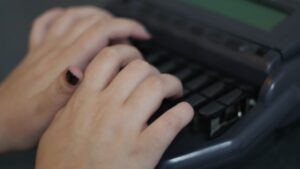How Court Reporters Ensure Accurate Trial Records
In the realm of legal proceedings, the significance of an accurate trial record cannot be overstated. Court reporters serve as the custodians of spoken word in the courtroom, ensuring that every statement, objection, and ruling is documented with precision. While digital approaches to court reporting—such as automated transcription and voice recognition software—are gaining traction, many legal professionals still regard live court reporters as the gold standard. These skilled practitioners bring nuanced understanding, adaptability, and years of experience to their work, which is particularly valuable in complex and dynamic courtroom environments.
In this article, we will explore the various methods court reporters utilize to ensure that trial records are accurate, the challenges they face, and the ongoing debate regarding the efficacy of traditional reporting versus digital methods. We will also address frequently asked questions and provide references for further reading on the topic.
The Role of a Court Reporter
At the heart of the judicial process, court reporters fulfill critical functions that extend beyond mere transcription. They are responsible for capturing verbatim testimonies and ensuring that every aspect of the proceedings is accurately reflected in the trial record.
Typically, the role of a court reporter involves:
- Transcribing spoken words: Utilizing shorthand or specialized reporting equipment to record dialogue in real-time.
- Editing for clarity and accuracy: Reviewing transcripts to ensure they reflect the nuances of speech, including tone, inflection, and emotional context.
- Creating official records: Compiling a complete and verified account of the trial that can be cited in appeals or future legal proceedings.
- Providing instant access: Delivering transcripts and summaries during trial proceedings to assist judges and attorneys.
Even with the growing use of technology in the courtroom, the human element that court reporters provide is indispensable. Their ability to synthesize language, understand legal jargon, and clarify misunderstandings creates a reliable record that meets stringent standards of accuracy.
Techniques for Ensuring Accuracy
To maintain the highest standards of accuracy, court reporters rely on a combination of training, experience, and sophisticated technology. Here, we explore some of these strategies:
1. Extensive Training and Certification
Becoming a certified court reporter requires rigorous training and passing standardized exams, such as the Registered Professional Reporter (RPR) exam. This training covers various aspects, including:
- Shorthand skills: Court reporters typically learn specific shorthand methods to record spoken words rapidly and accurately.
- Legal terminology: Familiarity with legal jargon ensures reporters can effectively capture complex dialogues that take place in court.
- Interpretation skills: Preparing for different dialects and accents ensures fluent comprehension during trials, enabling accurate reporting.
Certification also includes continual professional development, which helps reporters stay updated with emerging legal trends and technologies in court reporting.
2. Real-time Reporting Technology
Modern court reporters often employ real-time reporting technology, which allows them to provide immediate access to trial transcripts. This technology involves:
- Steno machines: Specialized machines record shorthand input that is then translated into text almost instantaneously. This text can be viewed by attorneys, judges, and other parties involved in the case during the proceeding.
- Digital audio recordings: Footage supplements written transcripts and provides further context should confusion arise.
- Speech recognition software: Even in traditional environments, reporters may utilize voice recognition tools to enhance efficiency while maintaining oversight.
By leveraging technology, court reporters can simultaneously transcribe and present real-time transcripts that facilitate immediate feedback and clarification during complex discussions.
3. Clear Communication and Clarification
Communication skills are paramount for court reporters. During a trial, the atmosphere can become tense, and misunderstandings can arise due to overlapping dialogue or interruptions. To combat this:
- Seek clarification: Reporters are trained to raise questions diplomatically if they miss a crucial point or need further details.
- Use nonverbal signals: Often, reporters will develop a terminology or system with attorneys and judges to signal when clarification is needed.
By making real-time adjustments and ensuring clarity, court reporters maintain the quality of the trial record, thus safeguarding its accuracy and integrity.
Challenges Faced by Court Reporters
While court reporters strive for accuracy and efficiency, numerous challenges can impede their efforts. Some key challenges include:
1. Multiple Speakers
The courtroom is often a volatile environment with multiple parties speaking simultaneously, including attorneys, witnesses, and jury members. This complexity can result in:
- Difficulty in attributing statements to the correct person.
- Overlapping dialogue that compromises clarity and comprehension.
To counteract these challenges, reporters will often employ techniques such as identifying speakers beforehand and actively listening to distinguish who is speaking. This preparation can significantly improve transcript accuracy.
2. Accents and Dialects
In increasingly multicultural courtrooms, diverse accents and speech patterns can prove challenging for court reporters. Sensitivity to these differences is vital to avoid misrepresenting testimonies. Strategies to navigate this challenge include:
- Familiarizing themselves with various dialects through training and exposure.
- Requesting phonetic spellings for unique names or terms from witnesses.
Such practices help ensure that all parties’ words are captured accurately, regardless of their linguistic background.
3. High-Stress Environments
Court reporters work in high-stress environments where they must focus entirely on capturing every detail, often under tight time constraints. To manage stress and ensure productivity, reporters must develop effective coping mechanisms, such as:
- Practicing mindfulness techniques to maintain focus.
- Engaging in regular skill-building exercises to enhance confidence and efficiency.
In addition, gaining experience in managing high-pressure situations through practice in various courtroom settings contributes significantly to a reporter’s ability to deliver accurate records.
The Digital Debate: Traditional Reporting vs. Technology
In today’s rapidly evolving legal landscape, the debate about the effectiveness of traditional court reporting versus digital alternatives is more relevant than ever.
1. Advantages of Traditional Court Reporting
Proponents argue that live court reporters provide unique advantages, such as:
- Nuance and interpretation: Experienced reporters can interpret nonverbal cues, tone, and context that machines may overlook.
- Immediate adaptability: Court reporters can adjust their methods in real-time based on the courtroom dynamics, including recognizing interruptions and changes in dialogue.
- Confidentiality and security: Trust in human discretion when handling sensitive information is often prioritized over digital technologies.
These elements contribute to the perceived reliability of traditional methods, especially in complex legal settings.
2. Limitations of Digital Alternatives
While technology has made remarkable strides, it faces notable obstacles, including:
- Accuracy issues: Machines can struggle with accents, contextual understanding, and multiple speakers, resulting in misinterpretations.
- Dependence on technology reliability: If systems fail or experience glitches, the continuity of the trial record may be jeopardized.
These hurdles raise critical concerns about trusting digital solutions as substitutes for human court reporters.
3. A Hybrid Future?
As the legal community continues to embrace technology, a possible hybrid approach may offer a balanced solution that leverages both traditional reporting and digital means. In this scenario:
- Live reporters can serve as supervisors while technology assists in transcription.
- Courtrooms can utilize digital tools to increase efficiency while maintaining the human touch for quality control.
Such an approach has the potential to combine the strengths of both methodologies while mitigating their respective weaknesses.
Frequently Asked Questions (FAQs)
1. How does a court reporter ensure the accuracy of their transcripts?
By employing training techniques, utilizing real-time reporting technology, maintaining clear communication, and implementing clarity verification strategies.
2. What are the primary tools used by court reporters?
Common tools include steno machines, digital audio recorders, transcription software, and sometimes live-streaming technology for real-time access to transcripts.
3. Are digital transcription services reliable for court reporting?
While digital tools hold potential advantages, they often lack the nuance and understanding that experienced human reporters bring to the table. Accuracy can vary significantly based on the context.
4. What challenges do court reporters face in diverse linguistic environments?
Court reporters must navigate varying accents, dialects, and speaking styles, which requires them to be adaptable and skilled in comprehensive listening and contextual interpretation.
Conclusion
In the world of legal proceedings, court reporters play a vital role in safeguarding the accuracy and integrity of trial records. Their training, sophisticated techniques, and adaptability set a standard that machine-generated transcripts struggle to meet. While the technology presents promising possibilities, especially regarding speed and efficiency, it is the human touch that truly ensures a reliable and nuanced recording of complex legal interactions.
As the landscape of court reporting evolves, the collaboration between traditional reporting and digital tools may pave the way for innovative advancements in legal documentation. Legal practitioners and court reporters alike will need to adapt and embrace these changes while advocating for the human aspect that is essential to thorough and accurate trial records.
For more information and resources on court reporting, consider exploring these articles:

About McCorkle Litigation Services
McCorkle Litigation Services is a premier provider of comprehensive litigation support, specializing in delivering exceptional court reporting services to legal professionals. With decades of experience in the industry, McCorkle has built a reputation for reliability, accuracy, and professionalism. Their team of certified court reporters is adept at capturing every word of legal proceedings with precision, ensuring attorneys and clients have access to impeccable records. Whether it’s depositions, trials, arbitrations, or hearings, McCorkle’s expertise extends across a wide array of legal matters, making them a trusted partner in the litigation process.
The experienced court reporters at McCorkle Litigation Services are highly trained in the latest technologies, including real-time transcription and video deposition synchronization. This ensures that clients receive timely and efficient services tailored to meet the demands of modern legal practices. McCorkle’s commitment to accuracy and confidentiality is unwavering, offering peace of mind to legal teams who require reliable documentation of critical proceedings. Backed by a legacy of excellence and a dedication to client satisfaction, McCorkle Litigation Services continues to set the standard for court reporting and litigation support nationwide.







